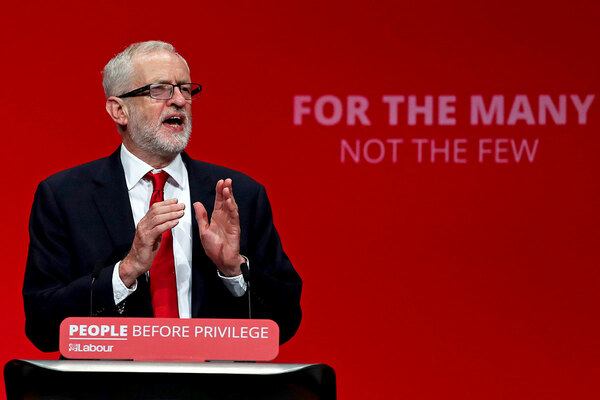You are viewing 1 of your 1 free articles
Dispatches from the Scottish National Party Conference 2019
Inside Housing spent the first half of this week at the Scottish National Party’s Annual Conference. At an important crossroads for the housing sector in Scotland, Lucie Heath rounds up some of the key talking points from the event in Aberdeen
On Tuesday, Nicola Sturgeon took to the stage in Aberdeen to deliver the keynote speech to delegates at the SNP Party conference.
It was exactly four years ago, in this same city, that Ms Sturgeon announced her government’s pledge to build 50,000 affordable homes by 2021.
Her 2015 speech marked the beginning of an exciting time for the Scottish housing sector. Since then, housing associations have enjoyed levels of investment that their counterparts south of the border could only dream of.
However, there are signs that housing could be slipping down the SNP’s agenda. In stark contrast to 2015, Ms Sturgeon’s speech contained no mention of housing. Of the 72 fringe events at this year’s conference, only two were on the topic of housing.
Housing minister Kevin Stewart was not a big presence. The only time he spoke publicly was to support a resolution on Gypsy and Traveller rights.
More visible was Aileen Campbell, cabinet secretary for communities and local government. Speaking at multiple fringe events, she was keen to use housing as an example of what the Scottish government could achieve when powers are devolved from Westminster.
But while housing is being used as beacon of success for the SNP in the past, many in the Scottish housing sector will be wondering whether the future looks quite as rosy.
After three days at the conference, Inside Housing shares some insights into where the party’s priorities stand.
Has housing had its time?
Fears that housing may be about to face a funding cut have been swirling around the sector for a while.
Speaking in the lead up to the conference, David Bookbinder, director of Glasgow and West of Scotland Housing Forum, told Inside Housing there were rumours that some senior Scottish ministers believe housing has now had its time as a key SNP priority, and there would be no repeat of the giveaways of 2015.
These fears were also vocalised by sector members who attended the conference.
Journalist Libby Brooks opened the Scottish Federation of Housing Associations’ (SFHA) fringe event by referencing “concerns that the Scottish government may be stepping back from making a comparable investment post 2021”.
While speaking at one fringe event, Lisa Borthwick, senior campaigns and policy manager at Shelter Scotland, said the charity was “really worried about what happens after we stop building”.
The housing minister did little to dispel the rumours. When asked by Inside Housing whether there was anything he could say to give clarity about what will happen after 2021, Mr Stewart simply said that no plans could be decided until the UK government’s budget came out.
Ms Campbell also failed to give a straight answer, when asked a similar question by Ms Brooks at the SFHA fringe event. Perhaps tellingly, she said the government was doing some “innovative thinking around financial transactions, borrowing and all those different things” to enable them to be ambitious around housing over the next 20 years.
Housing to 2040… and a bit before that
One thing Ms Campbell was keen to talk about was the government’s Housing to 2040 consultation, as she carried a stack of leaflets on the topic in her rucksack at all times.
The document will inform the government’s vision for housing over the next 20 years. However, none of the ministers would speculate on what they would expect to see when it is published next spring.
When asked by Inside Housing for some insight into the consultation, Mr Stewart said he wouldn’t second guess how people were going to respond.
In the shorter term, two distinct themes emerge when talk turns to how the next housing programme may differ from the last.
The first is an increased focus on improving existing stock. This will be welcomed by many housing associations, especially those who own a high volume of tenement stock in areas such as Glasgow.
Ms Campbell confirmed there would be a greater focus on regeneration going forward, saying she wanted to see less “porridge-coloured” housing.
The second theme, also championed by SFHA, is that government needs to focus more on building the right types of homes, in the right places. Sally Thomas, chief executive SFHA, explained that this means targets, if they are to exist, should be set at local levels, taking in to account demographics and housing need.
But all are dependent on high levels of funding. And while it’s clear that Ms Campbell and Mr Stewart don’t need to be convinced of the value of social housing, whether finance secretary Derek Mackay can be convinced to put housing at the top of his priority list is another story.
Child poverty
Child poverty was a widely discussed topic at the conference.
The phrase “making Scotland the best place for a child to grow up”, is a favourite of SNP politicians. References were often made to the recently introduced Child Poverty Act, which aims to see fewer than 5% of children living in absolute poverty by 2030.
When asked what people in the sector could do to make the case for increased investment in housing, Ms Campbell said they need to tell a “broader story about the impact of housing”.
She gave the example of a recent report from the Joseph Rowntree Foundation, which illustrated how poverty rates are lower in Scotland than the rest of the UK, once housing costs are taken into account.
SFHA clearly knows it needs to demonstrate that housing is about more than building – their fringe session was titled: ‘What contribution could housing make to reducing child poverty by 2040?’
However, housing won’t be the only sector hoping to illustrate that extra funding will help the government achieve its child poverty targets. One fringe event, called ‘Challenging poverty: the big ideas’, pitted housing, transport and social security head to head. Judging by the barrage of questions from the audience, transport was the highest on the agenda.
Climate change
One in five of the fringe events at this year’s conference was focused on the subject of climate change.
The Scottish government’s climate change targets are ambitious: greenhouse gas emissions are to be cut to net zero by 2045, five years earlier that the UK government’s 2050 target. The SNP is clearly proud of this, and wants the environment to be considered as one of the defining issues of the party.
This will clearly have a big impact on housing. Another SNP target is that all Scottish homes will have an Energy Performance Certificate rating of band C by 2040. While some money has been made available to social landlords through a Decarbonisation Fund, there’s no avoiding the fact that meeting the government’s targets is going to be expensive for landlords.
Moreover, meeting climate change targets is likely to suck up more and more of the government’s funding over the next decades.
So social landlords will need to demonstrate that they can take a leading role when it comes to decarbonisation. If new social homes are more energy efficient than those built by private developers, the government may be persuaded to give more support to building them.














